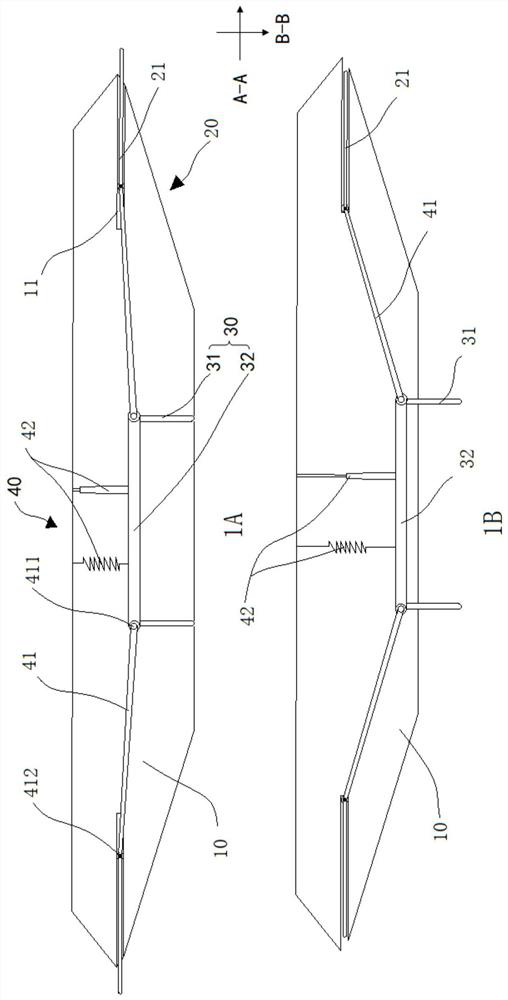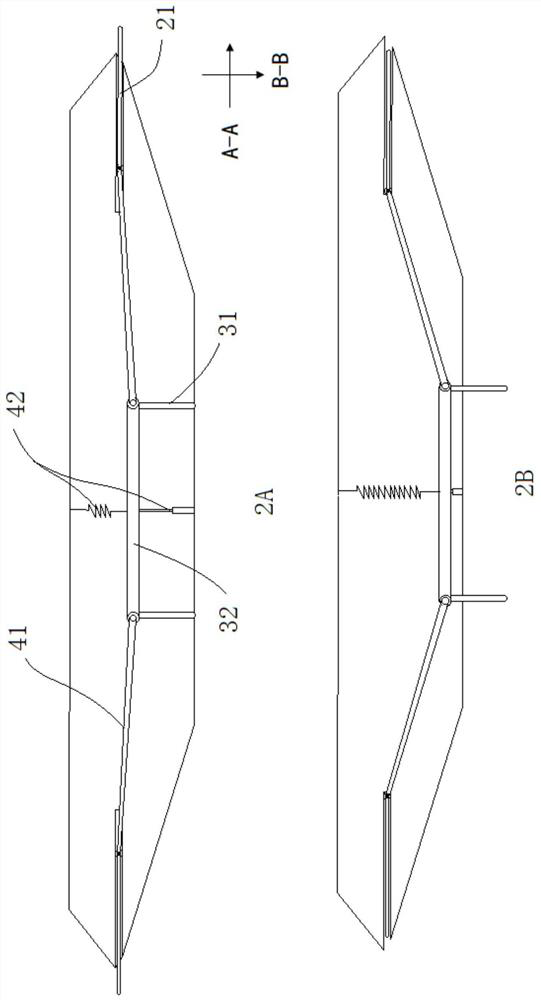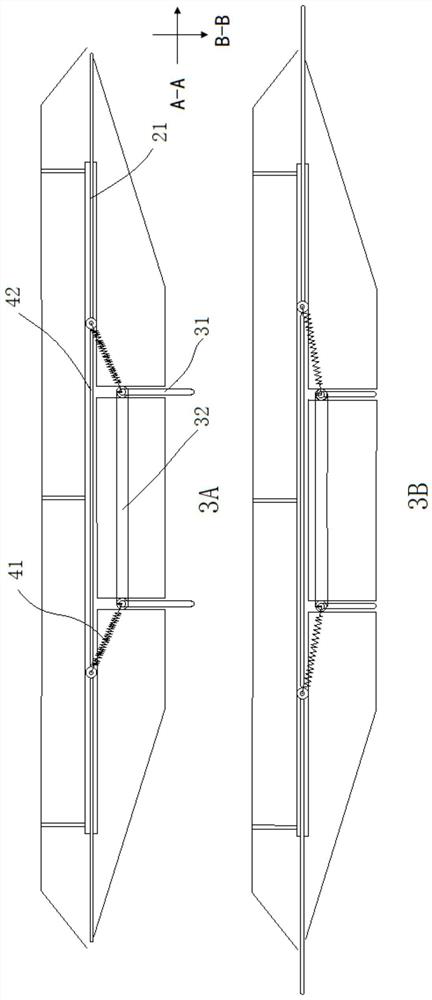Bridge self-adaptive wind vibration suppression device
An adaptive, bridge technology, applied in the direction of bridges, bridge construction, bridge parts, etc., can solve problems such as mobility that cannot meet synchronous or asynchronous, and achieve self-adjustment problems, good maneuverability, and ease of use. Effect
- Summary
- Abstract
- Description
- Claims
- Application Information
AI Technical Summary
Problems solved by technology
Method used
Image
Examples
Embodiment 6
[0041]The difference between the sixth embodiment and the fifth embodiment is that the structure of the shock absorber 42 is different. The shock absorber 42 in the sixth embodiment is an elastic structure, and the shock absorber 42 is arranged between the deflectors 21 arranged in pairs. Finally, the two deflectors 21 can make asynchronous horizontal movement under the traction of the shock absorber 42 , and at this time, the stabilizing plate 31 and the deflector 21 both move asynchronously. It should be noted that elastic connectors can be provided between the deflectors 21 arranged in pairs to enable them to achieve asynchronous horizontal movement, and technicians can take into account the requirements of vibration reduction and connection during design, and the design can meet the requirements of vibration reduction. Parts, and parts that can meet the elastic connection. Based on this concept, those skilled in the art can set the same type of connecting piece 32 , linkag...
PUM
 Login to View More
Login to View More Abstract
Description
Claims
Application Information
 Login to View More
Login to View More - R&D
- Intellectual Property
- Life Sciences
- Materials
- Tech Scout
- Unparalleled Data Quality
- Higher Quality Content
- 60% Fewer Hallucinations
Browse by: Latest US Patents, China's latest patents, Technical Efficacy Thesaurus, Application Domain, Technology Topic, Popular Technical Reports.
© 2025 PatSnap. All rights reserved.Legal|Privacy policy|Modern Slavery Act Transparency Statement|Sitemap|About US| Contact US: help@patsnap.com



